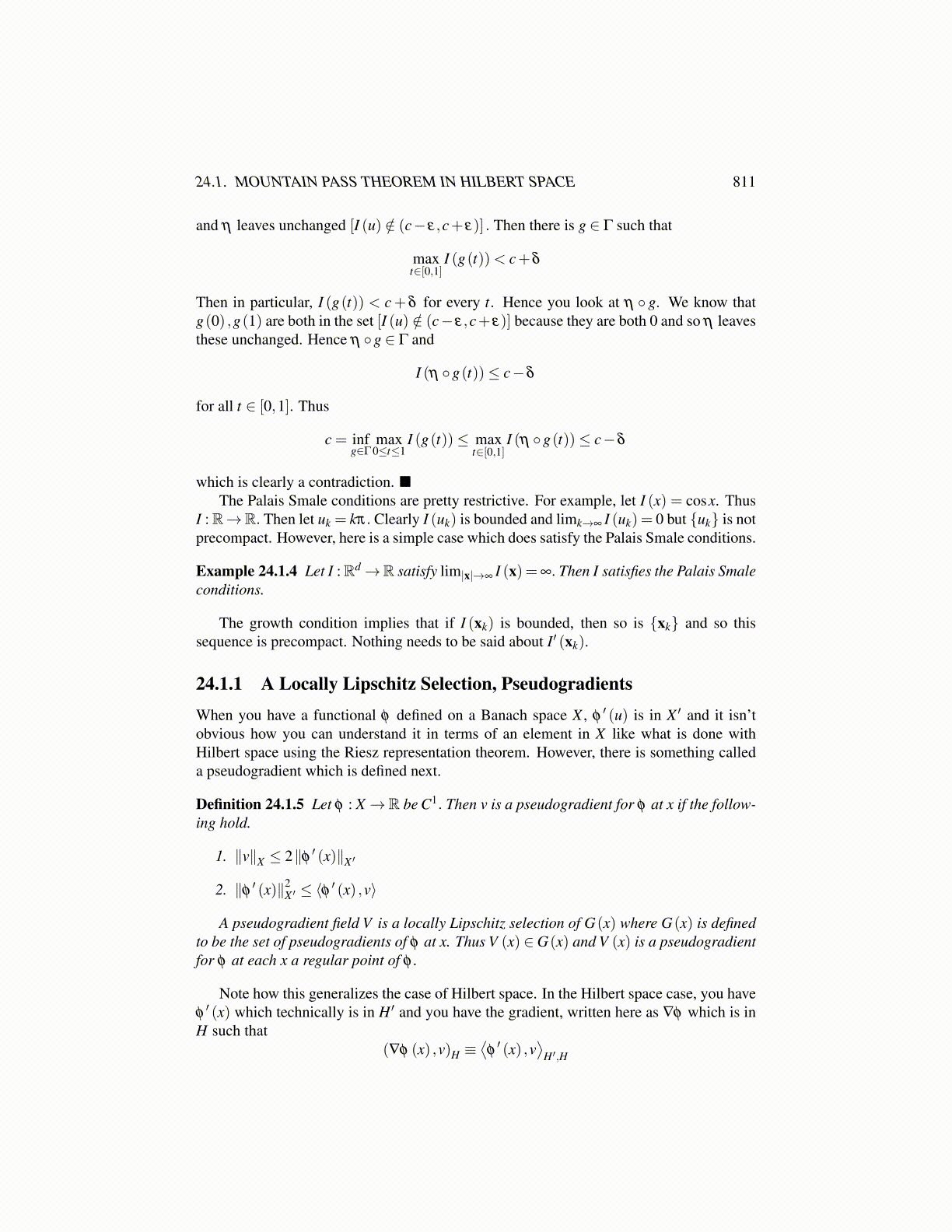
24.1. MOUNTAIN PASS THEOREM IN HILBERT SPACE 811
and η leaves unchanged [I (u) /∈ (c− ε,c+ ε)] . Then there is g ∈ Γ such that
maxt∈[0,1]
I (g(t))< c+δ
Then in particular, I (g(t)) < c+ δ for every t. Hence you look at η ◦ g. We know thatg(0) ,g(1) are both in the set [I (u) /∈ (c− ε,c+ ε)] because they are both 0 and so η leavesthese unchanged. Hence η ◦g ∈ Γ and
I (η ◦g(t))≤ c−δ
for all t ∈ [0,1]. Thus
c = infg∈Γ
max0≤t≤1
I (g(t))≤ maxt∈[0,1]
I (η ◦g(t))≤ c−δ
which is clearly a contradiction.The Palais Smale conditions are pretty restrictive. For example, let I (x) = cosx. Thus
I :R→R. Then let uk = kπ. Clearly I (uk) is bounded and limk→∞ I (uk) = 0 but {uk} is notprecompact. However, here is a simple case which does satisfy the Palais Smale conditions.
Example 24.1.4 Let I :Rd→R satisfy lim|x|→∞ I (x) =∞. Then I satisfies the Palais Smaleconditions.
The growth condition implies that if I (xk) is bounded, then so is {xk} and so thissequence is precompact. Nothing needs to be said about I′ (xk).
24.1.1 A Locally Lipschitz Selection, Pseudogradients
When you have a functional φ defined on a Banach space X , φ′ (u) is in X ′ and it isn’t
obvious how you can understand it in terms of an element in X like what is done withHilbert space using the Riesz representation theorem. However, there is something calleda pseudogradient which is defined next.
Definition 24.1.5 Let φ : X →R be C1. Then v is a pseudogradient for φ at x if the follow-ing hold.
1. ∥v∥X ≤ 2∥φ ′ (x)∥X ′
2. ∥φ ′ (x)∥2X ′ ≤ ⟨φ ′ (x) ,v⟩
A pseudogradient field V is a locally Lipschitz selection of G(x) where G(x) is definedto be the set of pseudogradients of φ at x. Thus V (x) ∈G(x) and V (x) is a pseudogradientfor φ at each x a regular point of φ .
Note how this generalizes the case of Hilbert space. In the Hilbert space case, you haveφ′ (x) which technically is in H ′ and you have the gradient, written here as ∇φ which is in
H such that(∇φ (x) ,v)H ≡
⟨φ′ (x) ,v
⟩H ′,H